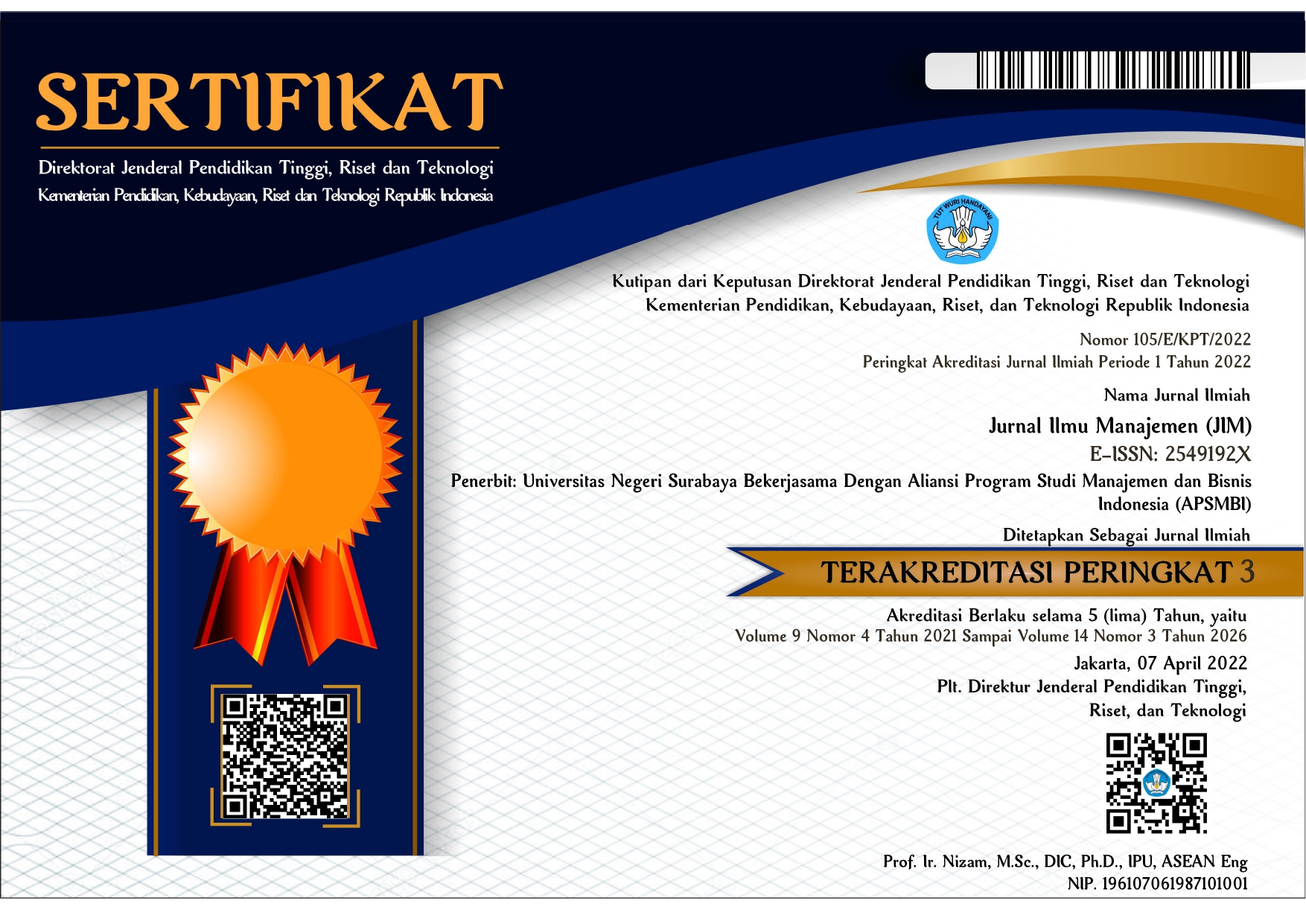Pengaruh faktor internal bank dan makroekonomi terhadap prediksi krisis perbankan syariah di Indonesia dengan menggunakan CD indeks periode 2016-2020
DOI:
https://doi.org/10.26740/jim.v11n1.p1-12Keywords:
banking crisis, CD-Index, internal factors, macroeconomyAbstract
This study aims to analyze the Bank's volatility in the face of the banking crisis in the period 2016-2020. This study uses a quantitative approach. The population in this study was Indonesia's corporate banking sector in 2016-2020. A sample of 11 banks published financial reports in 2016-2020. The data analysis technique used in this study is logistical regression analysis with Crisis and Default Index measurements. The results of the data analysis in this study are that there is a negative impact of capital practised by the Capital Adequacy Ratio, earning being practised with return on assets, sensitivity to market risk, and real economic growth on the banking crisis. There is an insignificant impact of asset quality practised by the Non-Performing Fund and management on the banking crisis. There is a positive impact of liquidity practised with Loan to Deposit Ratio and inflation on the banking crisis. Theoretically, this research can be used as a comparison and reference for other similar research studies. Practically, this research is expected to be used to see banking performance (as a predictor tool), which the government can use to take action by paying attention to banking stability.
References
Andari & Wiksuana. (2017). RGEC sebagai Determinasi dalam Menanggulangi Financial Distress pada Perusahaan Perbankan di Bursa Efek Indonesia. E-Jurnal Manajemen Unud, 6(1), 116-145.
Firdaus, R. N. (2015). Pengaruh Faktor Imternal dan Eksternal yang Memengaruhi Pembiayaan Bermasalah pada Bank Umum Syariah di Indonesia.Fakultas Ekonomi dan Bisnis Universitas Brawijaya. (Vol. 3), 321-334.
Hamida, D., Ahmar, N., & Djaddang, S. (2018). Determinan prediksi krisis perbankan berbasis banking sector fragility index. JIAFE (Jurnal Ilmiah Akuntansi Fakultas Ekonomi), 3(2), 1-16.
Kasmir. (2012). Bank dan Lembaga Keuangan Lainnya. Jakarta: Rajawali Press.
Mahmood, H., Waheed, A., & Khalid, S. (2014). Role of Macroeconomic Indicators in Banking Crisis. Academic Research International, 5(2). www.savap.org.pk205www.journals.savap.org.pk
Oktavilia, S. (2008). Deteksi Dini Krisis Perbankan Indonesia: Identifikasi Variabel Makro dengan Model Logit. In JEJAK (Vol. 1, Issue 1).
Sari, R.M. & Musdholifah. (2016). Implementing The Banking Sector Soundness Index (BSS) for Predicting Banking Crisis. Researchers World, 7(4), 114-122.
Sumani, (2017). Prediksi Kebangkrutan Bank dengan Menggunakan Analisis Diskriminan (Studi Kasus pada Bank yang Terdaftar di Bursa Efek Indonesia). Mathunesa: Jurnal Ilmiah Matematika, 1(6). 8-13.
Downloads
Published
How to Cite
Issue
Section
License

This work is licensed under a Creative Commons Attribution-NonCommercial 4.0 International License.
 Abstract views: 624
,
Abstract views: 624
, PDF Downloads: 570
PDF Downloads: 570










